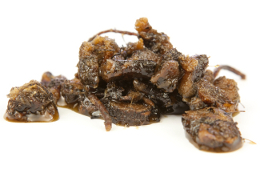The osha plant is known for its amazing medicinal properties. It is widely used by the native Americans to treat a number of health problems. Its uses, benefits, as well as the side effects are discussed in this article.

The scientific name of the osha plant is
Ligusticum porteri. This perennial plant is native to North America. It is a member of the plant family,
Umbelliferae, and is related to parsley, lovage, and dill. The osha plant is characterized by a long, thin, and hollow stalk with large divided leaves, and flowers and seeds that spread out like an umbrella at the top of the plant. The plant can look slightly similar to parsley and carrot, and it has a sweet, but strong smell that resembles the smell of celery.
Health Benefits
This plant is also known as 'bear medicine', as bears have been found to be greatly attracted to this plant. Bears are usually observed to search for this plant, and consume its root whenever they are wounded or sick. They also search for this plant after the winter hibernation.
The Osha plant is used in some native American ceremonies. The plant is known to possess anti-microbial, expectorant, diuretic, diaphoretic, decongestant, anesthetic, emmenagogue, and stimulating properties. The most noteworthy benefits of this plant and its root are enlisted below:
- It is known to have antibacterial and antiviral properties. It can help treat cold and flu, and upper respiratory infections.
- It is used for treating bronchial infections and a sore throat. Due to its numbing effect, it can soothe a sore throat.
- Osha is known to boost the immune system, and enhance its ability to prevent infections and diseases.
- This herb and its root can be used for relieving cough and congestion. It basically helps make the cough productive. For better results, it can be mixed with honey to make a cough syrup.
- It has a bitter taste, but it can help stimulate appetite. It is a common herbal medicine used by the native Americans for indigestion or an upset stomach.
- It is also used for relieving toothache. It acts like a mild anesthetic to numb the area, which in turn helps reduce the pain.
- The tea prepared from its root can be used topically for treating small cuts and wounds, as it has antibacterial properties.
- Apart from these, the root of this plant can be effective in alleviating tonsillitis, sinus congestion, stomach pain, asthma, allergies, pharyngitis, bronchial inflammation, rhinitis, nausea, vomiting, and pneumonia.
Possible Side Effects
The osha plant can look quite similar to some other plants, including the poison hemlock. So, there is a possibility of confusing poison hemlock with osha, which can be quite dangerous. Moreover, some people can be allergic to this herb, in which case its ingestion can produce an allergic reaction. This herb is not recommended to be taken in high dosage for a prolonged time period. If the root of this plant is used for an extended period of time, it can adversely affect the kidneys and the liver.
Pregnant and nursing women are usually advised to avoid this herb and its preparation. The ingestion of a high amount of root or its preparation can cause uterine contractions. So, pregnant women should not take this herbal preparation for medicinal purposes.
This herb can be found in open meadows, and dry and upland ravines. Its roots are harvested to prepare whole or powdered dried roots, which are used as a herbal medicine. You can also find it in the form of a syrup in the market, that is primarily used for cough and congestion. Though considered to be highly effective in curing several ailments, this herb and its preparation should be taken only after consulting a herbalist or a certified physician.
Disclaimer:
This article is for informative purposes only, and should not be treated as a substitute for professional medical advice.






 The scientific name of the osha plant is Ligusticum porteri. This perennial plant is native to North America. It is a member of the plant family, Umbelliferae, and is related to parsley, lovage, and dill. The osha plant is characterized by a long, thin, and hollow stalk with large divided leaves, and flowers and seeds that spread out like an umbrella at the top of the plant. The plant can look slightly similar to parsley and carrot, and it has a sweet, but strong smell that resembles the smell of celery.
The scientific name of the osha plant is Ligusticum porteri. This perennial plant is native to North America. It is a member of the plant family, Umbelliferae, and is related to parsley, lovage, and dill. The osha plant is characterized by a long, thin, and hollow stalk with large divided leaves, and flowers and seeds that spread out like an umbrella at the top of the plant. The plant can look slightly similar to parsley and carrot, and it has a sweet, but strong smell that resembles the smell of celery.